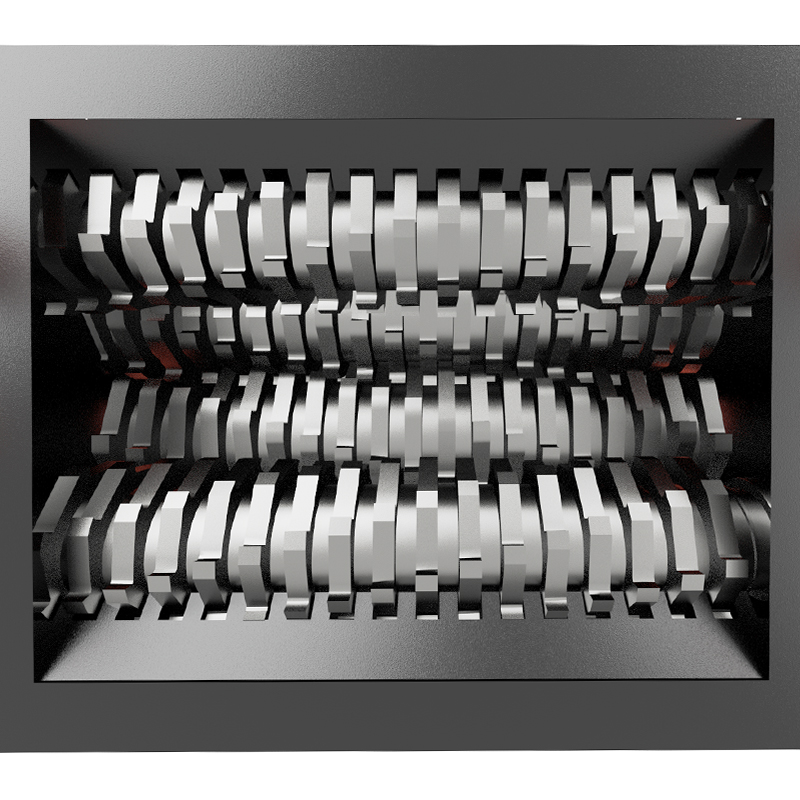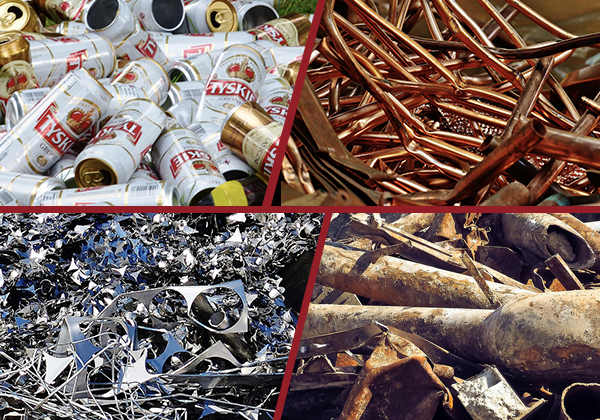+1(909)-996-3687
Metal Shredder
- All
- Product Name
- Product Keyword
- Product Model
- Product Summary
- Product Description
- Multi Field Search
Views: 0 Author: Site Editor Publish Time: 2025-06-16 Origin: Site









Have you ever wondered how scrap metal is turned into usable materials? Giant metal shredders are key to the recycling process. These powerful machines break down large metal objects into smaller, manageable pieces, supporting recycling and waste reduction. In this post, you'll learn what giant metal shredders are, why they are essential for recycling, and how they work to reduce waste efficiently.
Giant metal shredders are heavy-duty machines designed to break down large, bulky metal materials into smaller, manageable pieces. They play a key role in the recycling process by turning scrap metal into valuable raw materials. This transformation is essential for reducing waste and conserving natural resources.
Unlike smaller shredders, giant metal shredders are built to handle much larger volumes and tougher materials. These shredders can process massive items like cars, appliances, and construction debris, something smaller shredders cannot do. Their size and power allow them to efficiently reduce huge metal objects into smaller, more usable pieces.
Once the metal is shredded, it can be easily sorted, cleaned, and prepared for remelting or further processing. Giant metal shredders are the first step in transforming scrap metal into usable materials. After shredding, the metal is separated by type (ferrous and non-ferrous) and is ready for recycling in manufacturing new products.
Giant metal shredders are versatile and can handle a variety of metals. Some of the most common materials processed include:
These shredders are designed to efficiently separate metals from non-metallic materials, such as plastics or rubber, maximizing recycling efficiency.
Giant metal shredders break down large metal materials using high-powered motors and cutting devices. These machines apply various mechanical forces—like shear, impact, and compression—to tear and grind metals into smaller, more manageable pieces. This process helps reduce bulky items, making them easier to sort and recycle.
The metal scrap is fed into the shredder through a feeding mechanism. This can be done in two main ways:
Once the material is inside, the shredding process begins. The shredder's powerful motor drives the cutting blades or hammers, which tear the metal into smaller pieces. The material passes through a set of blades or hammers that break it down into consistent sizes. Depending on the design, the shredded metal is then sorted by type or size.
Single-shaft shredders use a single rotating shaft with blades or cutters attached. As the material is pushed towards the shaft, it gets cut into smaller pieces. These shredders are ideal for lighter materials and consistent, uniform shredding.
Dual-shaft shredders feature two rotating shafts with interlocking blades. This setup provides high torque and is excellent for shredding tough materials, like car parts or thick metal pipes. They operate at a slower speed, allowing them to crush large, tough items effectively.
Hammer mills use heavy-duty hammers that rotate at high speeds to pulverize the metal. These shredders are great for smaller, lighter materials like aluminum and scrap metal. The hammers strike the material, breaking it down into smaller pieces for easier recycling.
There are also three-shaft and four-shaft shredders, which combine multiple shafts to handle even tougher waste. These shredders provide more efficient processing, particularly for heavy-duty jobs like shredding automobiles and large industrial scrap.

The rotor shaft is the heart of a metal shredder. It rotates at high speeds, driving the shredding process. As it spins, it powers the blades or hammers, tearing through tough materials like metal. The rotor's strength and torque are essential for breaking down large, bulky scrap metal into smaller pieces.
Blades and hammers come in different types, each designed for specific materials:
The feeding mechanism controls how metal scrap enters the shredder:
Motors and gearboxes work together to power the shredding operation. Motors provide the force needed to rotate the rotor shaft and drive the blades or hammers. The gearboxes ensure the motor’s power is efficiently transferred to the shredding components. This setup ensures the shredder operates at maximum efficiency, handling large volumes of scrap metal without fail.
Safety is crucial when operating a giant metal shredder. These machines come with several protective features:
Giant metal shredders are excellent at handling ferrous metals, like steel and iron. These metals are magnetic, which makes it easier for shredders to separate them from other materials. Once shredded, ferrous metals can be collected using magnets, ensuring efficient recycling.
Non-ferrous metals, such as aluminum, copper, and brass, are also processed by giant shredders. Unlike ferrous metals, these materials are not magnetic. Shredders use different sorting methods, like eddy current separators, to separate non-ferrous metals from the mix. This makes recycling more efficient.
Giant metal shredders are designed to handle mixed waste, including cars, electronics, and household appliances. Shredders break down these items, separating metals from non-metallic materials, such as plastic, rubber, or glass. This separation allows for proper recycling and reuse of the materials.
During the shredding process, non-metallic materials like plastics, rubber, and textiles are also sorted out. Shredders use various separation techniques, including air classifiers, magnets, and screens, to ensure that non-metallic items are removed. This helps increase the quality of the shredded metal and keeps it free from contaminants.

Giant metal shredders are key players in reducing the size of bulky metal waste. By breaking down large items like old vehicles or construction debris, these machines significantly reduce the volume of scrap metal. This makes it easier to transport, store, and process the material for recycling.
One of the crucial roles of giant metal shredders is separating ferrous and non-ferrous metals. Ferrous metals, like steel and iron, are magnetic, while non-ferrous metals, like aluminum and copper, are not. Shredders use magnets and other separation techniques to ensure metals are sorted, maximizing recycling efficiency.
Recycling metals reduces the need for mining, which is energy-intensive and harmful to the environment. By using recycled materials, industries can conserve natural resources, reduce pollution, and lower energy consumption. This process helps preserve the earth's resources for future generations.
Giant metal shredders play a vital role in the circular economy. By transforming waste into usable materials, they help close the loop in production processes. Instead of metal waste piling up in landfills, it is shredded, sorted, and returned to manufacturing, reducing the need for new raw materials and promoting sustainability.
The future of giant metal shredders is driven by technology and sustainability. AI and automation are improving shredder efficiency, allowing real-time adjustments and reducing human error. At the same time, greener shredding practices, like energy-efficient motors, are reducing emissions and operational costs. As recycling demands grow, shredders are evolving with advanced sorting systems and sensors to handle a wider variety of scrap, supporting a more sustainable recycling economy.
Giant metal shredders play a crucial role in recycling by efficiently breaking down large metal waste. They help separate ferrous and non-ferrous metals, conserve resources, and promote sustainability. Understanding how these machines work is essential for improving recycling operations. Welcome to ENERPAT Consulting Products!
A: Giant metal shredders break down large metal waste into smaller, manageable pieces for recycling. They help separate ferrous and non-ferrous metals.
A: These shredders use powerful motors and cutting mechanisms like blades or hammers to shred metal into smaller fragments. They also use magnets to separate ferrous metals.
A: They can process ferrous and non-ferrous metals, mixed waste like vehicles and appliances, and non-metallic materials such as plastics and rubber.
A: They improve recycling efficiency, reduce waste, conserve resources, and contribute to the circular economy by recycling scrap metal.